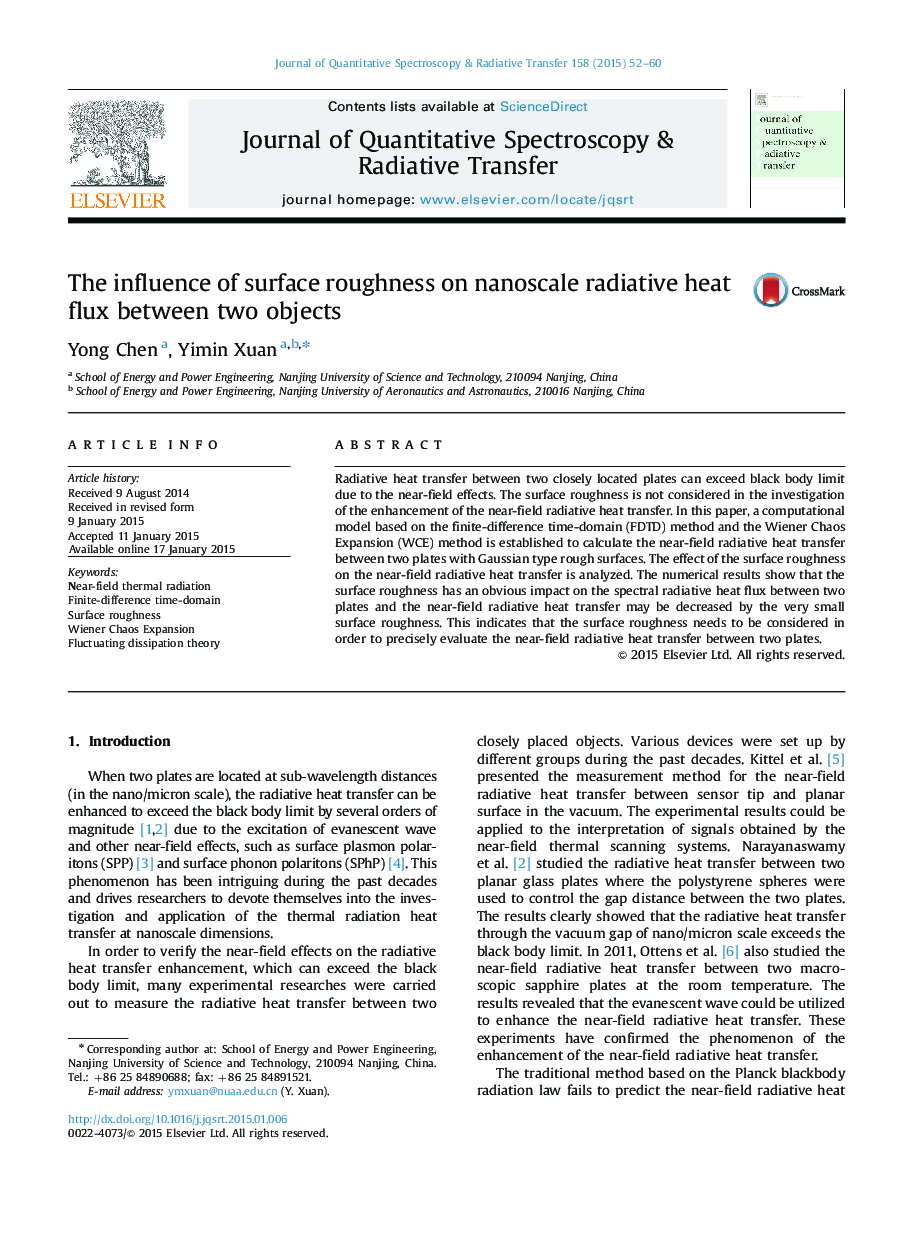| Article ID | Journal | Published Year | Pages | File Type |
|---|---|---|---|---|
| 5428047 | Journal of Quantitative Spectroscopy and Radiative Transfer | 2015 | 9 Pages |
â¢The roughness effect on micro/nano-scale thermal radiation is studied.â¢Roughness factor is calculated by combining the FDTD and WCE methods.â¢Thermal radiation increases with increase in the root mean square height.â¢A smaller correlation length enhances thermal radiation.
Radiative heat transfer between two closely located plates can exceed black body limit due to the near-field effects. The surface roughness is not considered in the investigation of the enhancement of the near-field radiative heat transfer. In this paper, a computational model based on the finite-difference time-domain (FDTD) method and the Wiener Chaos Expansion (WCE) method is established to calculate the near-field radiative heat transfer between two plates with Gaussian type rough surfaces. The effect of the surface roughness on the near-field radiative heat transfer is analyzed. The numerical results show that the surface roughness has an obvious impact on the spectral radiative heat flux between two plates and the near-field radiative heat transfer may be decreased by the very small surface roughness. This indicates that the surface roughness needs to be considered in order to precisely evaluate the near-field radiative heat transfer between two plates.
